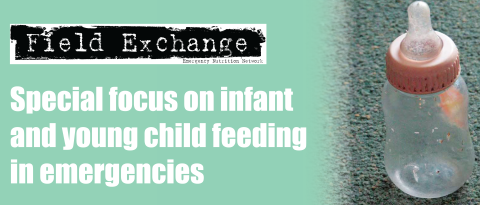Community participation in targeting in South Sudan
Summary of research1

Women collect bags between air drops near the town of Habilla, West Dafur
A recent study, carried out by the Feinstein International Centre and commissioned by the World Food Programme (WFP), set out to investigate the participation of recipient community in the targeting and management of humanitarian food assistance in complex emergencies. The study involved a substantial desk review of existing documentation and three weeks of field work in February and March 2008 in southern Sudan. The purpose of the study was to understand the ways in which participatory or community-based approaches to targeting have been attempted. The study examined community participation through the food aid programme cycle both retrospectively (during the war) and currently.
Targeting has been subject to constraints in Southern Sudan by diversion or taxation of food, limited information systems or analytical capacity, logistics and the speed of donor responses to requests. The impact of targeting is strongly affected by the practice of sharing food aid by recipient communities. Nevertheless, a fair amount of community- based targeting took place during the war through the Chieftaincy system, which proved sufficiently accountable for the most part to ensure that assistance got to the vulnerable people. The main exception to this observation in some cases was internally displaced people, particularly those displaced away from their own traditional leadership. Other mechanisms - relief committees and local administration - did not promote participation so well.
In the post-war era, targeting has become more administrative in nature. However, there is little evidence to show that a more administrative approach has been successful in reducing targeting inclusion or exclusion error. Several examples provide ample evidence to suggest that participatory methods could improve targeting and reduce errors - as well as address some salient protection concerns - where authorities and Chiefs are willing to promote this approach. But for the most part, the actual recipients have little say over targeting criteria, recipient selection, distribution or the monitoring of food assistance.
Much of the process remains opaque to recipients, who are not aware of their entitlements or the process of determining who is entitled. Even where people are aware of entitlements, there is also little post-distribution monitoring, so it is difficult to assess targeting error. The qualitative evidence gathered from an admittedly small sample in this study suggest that targeting error (both inclusion and exclusion) is significant, while there is little agreement over the criteria for targeting some groups and excluding others. With the exception of displacement, there is little understanding on the part of recipient communities of the rationale for these criteria.
Examples were found, however, where greater involvement of the recipients themselves in the targeting of food assistance helped to address all these problems. These examples include both natural disasters (flooding) and conflict (displacement by LRA attacks). Some of them involve traditional leadership, while others are based on the emergence of other leaders from among the ranks of trusted community elders or religious leaders. Virtually all of these examples take into consideration the fact that regardless of the mode of targeting, individuals are going to share food assistance in ways that external agencies do not take into account.
The authors of the study conclude that improved targeting would be promoted by better understanding of culture and context, continuously striving to involve all stakeholders and to improve transparency of procedures. Examples include awareness of various food aid modalities, registration and verification procedures, and exact beneficiary entitlement. Taking an integrated view of targeting that includes consideration of geography and timing and a willingness to promote the participation of recipient community groups is seen as critical to successful targeting.
1D. Maxwell and J. Burns (2008). Targeting in Complex Emergencies - Southern Sudan Case Study. Feinstein International Centre, May 2008
Imported from FEX website


